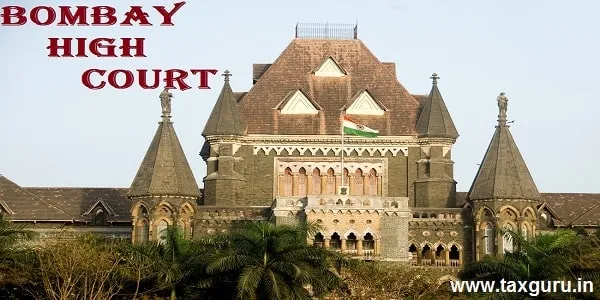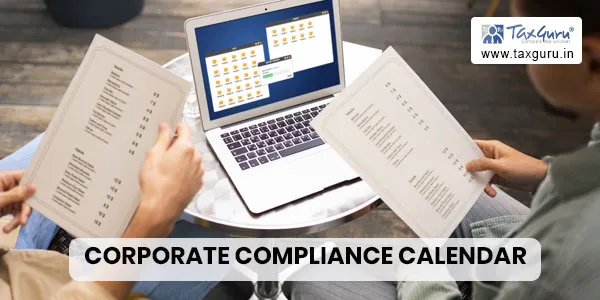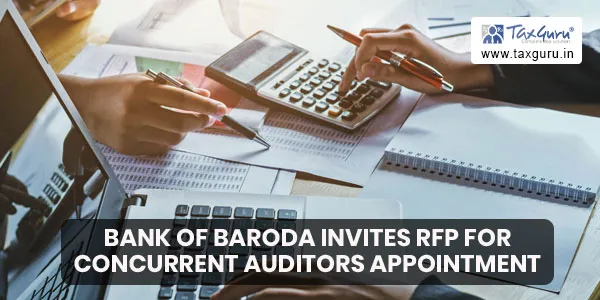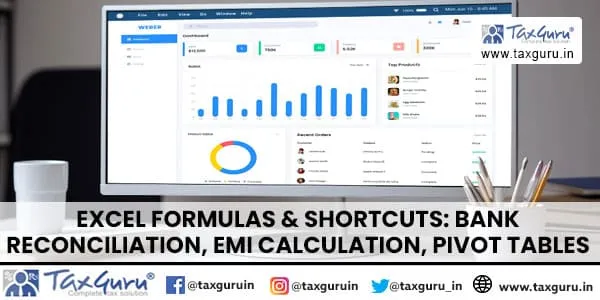Case Law Details
[1959] 35 ITR 388 (SC)
Supreme Court of India
Y. Narayana Chetty
Versus
Income-tax Officer
Venkatarama Aiyar, Gajendragadkar and Sarkar jj.
C.A. NOS. 317 TO 320 OF 1957
OCTOBER 15, 1958
JUDGMENT
These four appeals arise from four petitions filed against the Income-tax Officer, Nellore Circle, Nellore, respondent No. 1, in respect of the proceedings taken by him against three firms under section 34 of the Indian Income-tax Act (hereinafter called the Act). The firm M/s. Bellapu Audeyya and Chilla Pitchayya was formed on April 20, 1936, and it was dissolved on March 31, 1948. It consisted of two partners, Chilla Pitchayya and Bellapu Audeyya. Chilla Pitchayya had started another firm in the name and style of G. Pitchayya & Co. with another partner R. Subba Rao. This firm was formed on July 30, 1941, and it was dissolved on March 31, 1939. Bellapu Audeyya and Chilla Pitchayya had also formed another firm along with five other partners which carried on its business in the name and style of Prabhat Textiles. This firm was formed on December. 1, 1941, and it was dissolved by a decree of the civil court passed on December 22, 1949, this dissolution having taken effect from January 1, 1949. All the three firms were carrying on business in yarn and cloth and all of them were registered under section 26A of the Act. It appears that for the purpose of assessing the income of these firms for the years 1943-44 and 1944-45, repondent No. 1 was satisfied on making enquiries that each of the three firms was a separate entity and so separate assessment orders were passed in respect of the income of each one of them for the said two years.
Subsequently, on August 14, 1951, respondent No. 1 issued notice against the firm of Prabhat Textiles under section 34 of the Act. In the proceedings thus commenced, respondent No. 1 held that the firm of Prabhat Textiles was a fictitious firm and that the real partners were C. Pitchayya and B. Audeyya. As a result of this finding respondent No. 1 cancelled the registration of the said firm under rule 6B of the Income-tax Rules and passed fresh orders of assessment against the said firm on the basis that it was an unregistered firm for the assessment years 1943-44 and 1944-45 on August 14, 1952, and February 25, 1953, respectively. Similar action was taken by respondent No. 1 in respect of the two other firms on the same dates.
Thereupon Y. Narayana Chetty, one of the partners of the Prabhat Textiles filed a writ petition in the High Court of Madras, No. 613 of 1952, against respondent No. 1 under article 226 of the Constitution and prayed that the High Court should issue a writ of prohibition or any other appropriate writ, order or direction prohibiting the first respondent from continuing the proceedings as per his notice of August 14, 1951, and from enforcing the order of fresh assessment passed in the said proceedings on August 14, 1952, in regard to the assessment year 1943-1944. In respect of the same firm Chilla Pitchayya sought for a similar relief by Writ Petition No. 201 of 1953 in regard to the proceedings and assessment order for the assessment year 1944-45. The same Chilla Pitchayya also filed Writ Petitions Nos. 629 of 1952 and 202 of 1953 in respect of the proceedings taken and fresh assessment orders passed against the two remaining firms for the assessment years 1943-44 and 1944-45 respectively. The four petitions were heard together by the High Court and were dismissed on March 5, 1954. The petitioners then applied for and obtained from the High Court a certificate under article 133 read with Order XLV, rules 1, 2, 3 and 8 that the value of the subject-matter in the petitions before the High Court as well as of the appeals before this court was more than Rs. 20,000. It is with this certificate that the four appeals have come before this court. Y. Narayana Chetty is the appellant in Civill Appeal No. 317 of 1957 whereas Chilla Pitchayya is the appellant in Civil Appeals Nos. 318, 319 and 320 of 1957.
In the High Court it was urged by the appellants that the proceedings taken under section 34 against each of the said firms were without jurisdiction and void. It was also contended that the cancellation of the registration of each of the firms was similarly void and without jurisdiction inasmuch as rule 6B under which the said order of cancellation was passed was ultra vires the Central Board of Revenue which promulgated the Rules under the powers conferred on it by the Act. Besides the appellants attacked the validity of the orders passed against them under section 34 on the ground that it was illegal to assess escaped income under section 34 on the basis that the firms were unregistered firms while maintaining the original assessment for the said firms on the basis that they had been duly registered under section 26A of the Act. The High Court has held against the appellants on all these points. Besides the High Court has stated in its judgment that it was admitted by the appellants before it that appeals had been filed against each one of the orders challenged in the writ proceedings and the High Court thought that that itself would suffice to justify its refusal to exercise its jurisdiction under article 226 of the Constitution. However, since the primary relief asked for by the appellants in their respective petitions was the issue of a writ of prohibition, the High Court felt that it may as well deal with the merits of the contentions raised by the appellants. That is why the High Court examined the merits of the said contentions. On behalf of the appellants, Mr. Viswanatha Sastri has raised the same three points before us.
The first point raised by Mr. Sastri is that the proceedings taken by respondent No. 1 under section 34 of the Act are invalid because the notice required to be issued under the said section has not been issued against the assessees contemplated therein. In the present case the Income-tax Officer has purported to act under section 31(1)(a) against the three firms. The said sub-section provides inter alia that “if the Income-tax Officer has reason to believe that by reason of the omission or failure on the part of the assessee to make a return of his income under section 22 for any year or to disclose fully and truly all material facts necessary for his assessment for that year, income, profits or gains chargeable to income-tax has been under assessed”, he may, within the time prescribed, “serve on the assessee a notice containing all or any of the requirements which may be included in the notice under sub-section (2) of section 22 and may proceed to re-assess such income, profits or gains.” The argument is that the service of the requisite notice on the assessee is a condition precedent to the validity of any re-assessment made under section 34; and if a valid notice is not issued as required, proceedings taken by the Income-tax Officer in pursuance of an invalid notice and consequent orders of reassessment passed by him would be void and inoperative. In our opinion, this contention is well-founded. The notice prescribed by section 34 cannot be regarded as a mere procedural requirement; it is only if the said notice is served on the assessee as required that the Income-tax Officer would be justified in taking proceedings against him. If no notice is issued or if the notice issued is shown to be invalid then the validity of the proceedings taken by the Income-tax Officer without a notice or in pursuance of an invalid notice would be llegal and void. That is the view taken by the Bombay and Calcutta High Courts in CIT v. Namsukh Molilal1and R.K. Das & Co. v. CIT2 and we think that that view is right.
Let us then consider the nature of the notice issued by the Income- tax Officer in the present proceedings. It is conceded by Mr. Sastri that the notice issued by the Income-tax Officer was served on the appellant C. Pitchayya on behalf of the firms in question and that in each case the notice specifically averred that the Income-tax Officer had reason to believe that the income of the assessee had been underassessed in the relevant years of assessment. The notice further required the assessee to deliver to the Officer within thirty-five days of the receipt of the notice a return in the attached form of the total income and total world income of the assessee assessable for the relevant period. In pursuance of this notice the appellant Pitchayya in fact appeared before the Officer during the course of the proceedings commenced under section 34. Mr. Sastri contends that this notice is defective because it purports to be issued against the firm and no notice has been issued against the respective partners of the firm. According to Mr. Sastri the assessee who is entitled to a notice under section 34(1)(a) is not the firm but each individual partner of the firm. He also suggests that each individual partner should have been called upon to make a return of his total income assessable for the relevant year; inasmuch as the notice is issued against the firm and not against individual partners it is invalid. In support of this argument Mr. Sastri has referred us to the definition of the word “assessee” under section 2, clause (2) as it stood prior to the amendment of 1953. Under the said clause, assessee meant “a person by whom income-tax is clearly payable”. In the case of a registered firm income-tax is clearly payable by the individual partners of the firm under section 23(5) of the Act, says Mr. Sastri; and so if the Income-tax Officer intended to take action under section 34 it was his duty to issue the requisite notice against individual partners in respect of their respective incomes for which they were liable to pay the tax. This argument purports to derive support from the provisions of section 23(5) as they stood before the amendment introduced in 1956. The effect of the said provisions was that “the sum payable by the firm itself shall not be determined but the total income of each partner of the firm including therein his share of its income, profits and gains in the previous year shall be assessed and the sum payable by him on the basis of such assessment shall be determined”; so that what the Income-tax Officer had to do in assessment proceedings against a registered firm was to determine the total income of each partner of the firm and not to determine the sum payable by the firm itself. The argument is that this provision shows that the person liable to pay the tax was each individual partner of the firm and so it is the individual partners of the firm who are entitled to the statutory notice under section 34(1)(a). In our opinion, this argument is not well-founded. Section 3 of the Act which is the charging section provides inter alia that “where any Central Act enacts that income-tax can be charged for any year at any rate or rates, tax at that rate or those rates shall be charged for that year in accordance with and subject to the provisions of this Act in respect of the total income of the previous year of every firm;” in other words, a firm is specifically treated as an assessee by section 3. Besides, the word “person” used by section 2, sub-section (2) of the Act while defining the assessee, would obviously include a firm under section 3(42) of the General Clauses Act since it provides that a person includes “any company or association or body of individuals whether incorporated or not”. Therefore, it would not be correct to say that an assessee under section 2, sub-section (2) of the Act necessarily means an individual partner and does not include a firm. The argument based upon the relevant provisions of section 23(5) is also not valid because it is obvious that for the purposes of assessment at all relevant and material stages under sections 22 and 23 it is the firm that is treated as an assessee. When a return of the income is made for the relevant year, it is a return with regard to the total income of the firm that has to be submitted under section 22; and when assessment is levied under section 23, the Income-tax Officer determines and can determine the total income of each partner of the firm only after ascertaining the total income of the firm itself. It is true that section 23(5) as it then stood required the Income-tax Officer to determine the total income of each partner of the firm including his share of the firm’s income and to assess each partner in respect of such income, and in that sense individual partners of the firm undoubtedly become liable to pay income-tax; but it is clear that in determining the total income of each partner his share in the firm’s income has to be included and so the firm does not cease to be an assessee for the purpose of section 23(5). This position is now clarified by the provisions of section 23(6)(a)(i) and (ii) as amended in 1956. The present section 23(5)(a)(i) and (ii) provides:
“(5) Notwithstanding anything contained in the foregoing subsections, when the assessee is a firm and the total income of the firm has been assessed under sub-section (1), sub-section (3) or sub-section (4) as the case may be,
(a) in the case of a registered firm,
(i) the income-tax payable by the firm itself shall be determined ; and
(ii) the total income of each partner of the firm, including therein his share of its income, profits and gains of the previous year, shall be assessed and the sum payable by him on the basis of such assessment shall be determined:”
and so it is clear that the registered firm does not at all cease to be an assessee under this provision.
In this connection it would be relevant to refer to section 23(4). This sub-section provides:
“If any person fails to make the return required by any notice given under sub-section (2) of section 22 and has not made a return or a revised return under sub-section (3) of the same section or fails to comply with all the terms of a notice issued under sub-section (4) of the same section or, having made a return, fails to comply with all the terms of a notice issued under sub-section (2) of this section, the Income-tax Officer shall make the assessment to the best of his judgment and determine the sum payable by the assessee on the basis of such assessment and, in the case of a firm, may refuse to register it or may cancel its registration if it is already registered:
Provided that the registration of a firm shall not be cancelled until fourteen days have elapsed from the issue of a notice by the Income-tax Officer to the firm intimating his intention to cancel its registration.”
This provision clearly shows that the person to whom the first part of the provision refers includes a firm and it lays down that if a firm commits a default as indicated the Income-tax Officer may refuse to register it or may cancel its registration if it is already registered. Thus there can be no doubt that section 23(4) treats the firm as an assessee and provides for the imposition of penalty against the firm in case the firm commits any of the defaults indicated in the sub-section. The effect of the relevant provisions of section 23, therefore, is that for the assessment of the total taxable income it is the affairs of the assessee firm that are investigated and examined and when the total income of the firm is ascertained, it is allocated to its individual partners in proportion to their respective shares. The result of such allocation undoubtedly is to make the partners liable to pay tax in respect of their taxable income thus allocated; but that cannot justify the inference that the firm is not an assessee in the relevant proceedings.
Even when the notice is issued under section 34(1)(a) the Income-tax Officer proceeds to act on the ground that the income, profits and gains of the firm which are chargeable to income-tax have been under assessed; it is the income of the firm which is initially ascertained in the assessment proceedings-under section 23 and it is in respect of the said income of the firm that the Income-tax Officer finds that a part of it has escaped assessment. We do not, therefore, think that the appellant’s argument that the notice issued against the firm and served on the appellant was invalid under section 34(1)(a) can be accepted.
It is then urged that the Income-tax Officer was bound to issue notices to individual partners of the firms because at the material time all the firms had been dissolved. Mr. Sastri concedes that under section 63(2) a notice or requisition under the Act may in the case of a firm be addressed to any member of the firm but his contention is that this applies to a firm in existence and not to a firm dissolved. If the appellants’ case is that as a result of dissolution of the firms the firms had discontinued their business as from the respective dates of dissolution they ought to have given notices of such discontinuance of their business under section 25(2) of the Act. Besides, in the present case, the main appellant has in fact been served personally and the other partners who may not have served have made no grievance in the matter. We are, therefore, satisfied that it is not open to the appellants to contend that the proceedings taken by the Income-tax Officer under section 34(1)(a) are invalid in that notices of these proceedings have not been served on the other alleged partners of the firms. Incidentally it may be pointed out that the finding of the Income-tax Officer in respect of all the three firms is that the only persons who had interest in the business carried on by the said firms were B. Audeyya and C. Pitchayya. It is remarkable that B. Audeyya has not cared to challenge the proceedings or to question the validity of the fresh assessment orders passed by the Income-tax Officer in the present proceedings.
Mr. Sastri then challenges the validity of the cancellation of the registration of the three firms on the ground that rule 6B under which the Income-tax Officer purported to act is ultra vires. Rule 6B provides that in the event of the Income-tax Officer being satisfied that the certificate granted under rule 4 or under rule 6A has been obtained without there being a genuine firm in existence he may cancel the certificate so granted. The material rules of which rule 6B is a part have been framed by the Central Board of Revenue under the authority conferred by section 59 of the Act. This section empowers the Central Board of Revenue, subject to the control of the Central Government, to make rules inter alia for carrying out the purposes of the Act. Section 59(2)(e) lays down that such rules may provide for any matter which by this Act is to be prescribed and the rules preceding rule 6B deal with the procedure to be followed, and prescribe the application to be made, for the registration of firms under section 26A of the Act. Section 59(5) provides that the rules made under the said section shall be published in the official gazette and shall thereupon have effect as if enacted in this Act. Thus there is no doubt that the rules are statutory rules and once they are published in the official gazette they are operative as if they were a part of the Act. Mr. Sastri concedes this position; but he argues that rule 6B is inconsistent with the material provisions in the Act and is therefore ultra vires the Central Board of Revenue. This argument is based substantially on the provisions of section 23(4). We have already referred to the provisions of this sub-section. Mr. Sastri contends that it is only where the requirements of section 23(4) are satisfied that the registration of a firm can be cancelled. The procedure for registration of firms is laid down in section 26A of the Act. An application has to be made to the Income-tax Officer on behalf of any firm constituted under the instrument of partnership specifying the individual shares of the partners for registration for the purposes of the Act and of any other enactment for the time being in force and relating to income-tax and super-tax. Subsection (2) requires that the said application shall be made by such person or persons and at such times and shall contain such particulars and shall be in such form and be verified in such manner as may be prescribed and it shall be dealt with by the Income-tax Officer in such manner as may be prescribed. It is in pursuance of the requirements of section 26(2) that the relevant rules for the registration of the firms have been made. The question which arises for our decision in this connection is: if a firm has been registered under section 26A, when can such registration be cancelled? The appellant suggests that the only cases in which such registration can be cancelled are those prescribed in section 23(4). We have no doubt that this argument is fallacious. The cancellation of registration under section 23(4) is in the nature of a penalty and the penalty can be imposed against a firm if it is guilty of any of the defaults mentioned in the said sub-section. It would be noticed that where registration is cancelled under section 23(4), there is no doubt that the application for registration had been properly granted. The basis of an order under section 23(4) is not that the firm which had been registered was a fictitious one, but that, though the registered firm was genuine, by its failure to comply with the requirements of law it had incurred the penalty of having its registration cancelled. That is the effect of the provisions of section 23(4). On the other hand, rule 6B deals with cases where the Income-tax Officer is satisfied that a certificate of registration has been granted under rule 4 or under rule 6A without there being a genuine firm in existence; that is to say an application for registration had been made in the name of a firm which really did not exist; and on that ground the Income-tax Officer proposes to set right the matter by cancelling the certificate which should never have been granted to the alleged firm. That being the effect of rule 6B it is impossible to accede to the argument that the provisions of this rule are inconsistent with the provisions of section 23(4) of the Act. If the Income-tax Officer is empowered under section 26A read with the relevant rules to grant or refuse the request of the firm for registration, it would normally be open to him to cancel such registration if he discovers that registration had been erroneously granted to a firm which did not exist. Rule 6B has been made to clarify this position and to confer on the Income-tax Officer in express and specific terms such authority to review his own decision in the matter of the registration of the firm when he discovers that his earlier decision proceeded on a wrong assumption about the existence of the firm. In our opinion, there is no difficulty in holding that rule 6B is obviously intended to carry out the purpose of the Act and since it is not inconsistent with any of the provisions of the Act its validity is not open to doubt.
It is, however, urged that whereas the firm aggrieved by the order passed by the Income-tax Officer under section 23(4) can challenge the correctness or propriety of the order in an appeal against the final assessment order passed under section 23, no such remedy is available to the firm whose registration is cancelled under rule 6B. We are not impressed by this argument. The validity of the rule cannot, in our opinion, be challenged merely on the ground that no appeal has been provided against the order passed under the impugned rule. It is also true that whereas before taking action under section 23(4) the Income-tax Officer is required to issue a notice to the firm, no such provision is made under rule 6B. Mr. Sastri has, however, conceded that the appellant before us had notice and was given an opportunity to satisfy the Income-tax Officer that the respective firms were genuine and not fictitious. That being so we do not think that it would be open to the appellant to contend that the order passed against him under rule 6B is invalid on the purely academic ground that rule 6B does not require notice to be issued before the registration of a firm is cancelled. If the power under rule 6B is exercised by the Income-tax Officer against a firm without giving it a notice in that behalf and without affording it an opportunity to satisfy the Officer that it is a genuine firm, it may be open to the firm to question the validity of the order on that ground. We are, however, not called upon, to deal with such a case in the present appeals. In this connection we may incidentally refer to the decision of this court in Ravulu Subha Rao v. CIT1where this court has held that rules 2 and 6 of the rules framed under section 59 of the Indian Income-tax Act are not ultra vires the rule-making authority.
The last argument which Mr. Sastri sought to raise before us was that the revised assessment is completely illogical, and therefore, illegal, in each case inasmuch as the original assessment for the two assessment years still remains as on the basis that the firms in question are registered and the fresh assessment in respect of the escaped income for the same years is made on the basis that the said firms are not registered. Mr. Sastri says that it is not open to the Income-tax Officer to adopt such a course. If registration has been cancelled the whole of the assessment should be made on that footing; the Department cannot treat the firm as registered for part of the income, and unregistered for the balance, during the same assessment years ; that is Mr. Sastri’s grievance. We do not propose to deal with the merits of this contention. There can be no doubt that it would be open to the appellants to raise this contention in the appeals which they have filed against the fresh orders of assessment. We understand that applications have been made by the appellants in respect of the said orders of assessment under section 27 of the Act. If that be so the appellants may, if it is open to them to do so, ventilate their grievance in the said proceedings also. We hold that this contention cannot be urged in petitions for writs of prohibition under article 226 of the Constitution, since they do not raise any question of jurisdiction. All that the appellants would be able to argue on this ground would be that the course adopted by the Income-tax Officer in making orders of fresh assessment is irregular and illogical and should be corrected. That is a matter concerning the merits of the orders of assessment and by no stretch of imagination can it be said to raise any question of jurisdiction under article 226. That is why we express no opinion on this point.
Before we part with this case we would like to observe that Mr. Kripal for the respondent sought to raise three preliminary objections. He urged that the issue of a writ is a discretionary matter and since the High Court has refused to exercise its discretion in favour of the appellants the appeals would be virtually incompetent inasmuch as this court would be slow to interfere with the exercise of discretion by the High Court. He also argued that the original petitions to the High Court are incompetent under article 226 since under the Act the appellants had an alternative effective remedy available to them in the form of appeals against the impugned orders and in fact they had filed such appeals and had also made applications under section 27 of the Act. Mr. Kripal also contended that the High Court would have no jurisdiction to issue a writ of prohibition against the tax authorities. We do not propose to consider these objections because, as we have already indicated, we are satisfied that the view taken by the High Court on the points raised before it is right. These objections may have to be considered in future on a suitable occasion.
The result is the appeals fail and must be dismissed with costs.




















